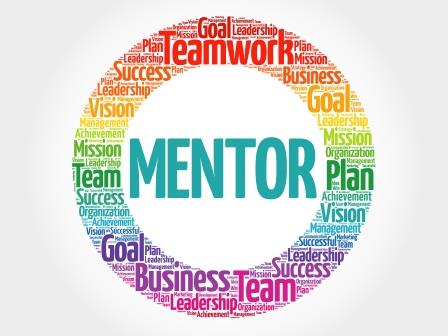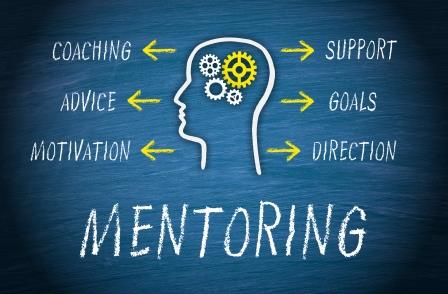How to Design a Successful Mentoring Program

Mentoring programs can be worthwhile experiences for both industry up-and-comers and seasoned veterans. Benefits for mentees range from a boost in self-confidence to life-long positive professional impacts, such as learning how to speak up and be heard and understanding how to accept feedback. Mentors have an opportunity to share their knowledge, strengthen their interpersonal skills, and give back to their mentee and the organization. For organizations, mentoring programs encourage member engagement and retention, facilitate career progression, support development of leadership capacity and break down cross-company silos.
“Mentoring programs aren’t a new concept for associations, but examples of successful mentoring programs can be tough to find,” said Carrie McIntyre, vice president, business development and technology solutions for Naylor Association Solutions. “There are inherent challenges that need to be addressed to make mentoring work for the participants and the association: mentor/mentee training, program structure, monetization and staff resources,” she continued.
Designing and executing an effective mentoring program takes a good bit of love and attention. In this article, we share our top tips for keeping up with the seven stages of your mentoring program life cycle:
- Pre-evaluation and research
- Getting ready
- Design
- Recruiting
- Matching
- Training and support
- Evaluation
- Designing and executing an effective mentoring program takes a good bit of love and attention.

- Experts say mentoring relationships are three times more likely to be successful when there is advance training for participants.

- When gathering feedback, try to hear from everyone and check on participant progress at least once or twice during the program.

- A common mistake in program design is to overlook mentor and mentee training.

Stage 1: Pre-Evaluation and Research
Do some research about the needs and goals of your association and members before designing your program. The program manager needs to help your association understand what mentoring is and how it can contribute to a particular goal, such as developing emerging leaders or improving member retention. Surveys and discussion groups are a good way to begin this conversation. Once you know why you want to start a mentoring program, you need to determine how you will accomplish it.
Stage 2: Getting Ready
Ensure you have the right tools in place for a mentoring program, a well-defined purpose, and the support of your manager or executive team. Once your stakeholders are on board, define a clear purpose for the program and establish the criteria you will use to measure success. Then, determine the time and budget required to run a mentoring program as well as the resources required to support the effort.

Stage 3: Design
Set up a solid foundation for your program. As part of the program design step, you should be asking questions, such as:
- How much structure is required?
- Should it be administrator-matched or self-matching?
- Where will my funding come from?
- Should I run a pilot program to test the waters?
Write down the answers to these questions and any others that arise as part of a reference document for stakeholders.
Stage 4: Recruiting
Designing the marketing and recruitment process is one of the most critical and sensitive portions of mentoring program set-up. You will need some type of application form and a marketing message to attract mentees and mentors to the cause. The application should only include the information you need for matching, and we suggest using no more than three matching criteria so the application does not become tedious. Make sure to accompany the form with terms and conditions so mentors and mentees are aware of the expectations placed upon them, including payment details and time periods.
In your marketing efforts, include a summary of the benefits each party will receive as a result of joining the mentoring program. It’s especially important to highlight what’s in it for mentors, since they often don’t realize how much they’re likely to get out of participating in the program. Previous participant testimonials are also great to use in marketing materials. To strengthen your message, try to include written testimonials or video clips from past mentees or mentors.
Stage 5: Matching
Now that you have participants for the mentoring program, the next step is to decide how potential mentors and mentee will be paired. The “self-service” route is an option, but mentees may prefer to have some guidance in their selection. If your program design involves administrator matching, here are some options:
- There are many ways to match mentors and mentees. One option is to use printed sheets of paper on a pin-up board, but for groups over 20 pairs, this method is boring and difficult to get right. If you choose to go this route, make sure the participant’s profile and selection criteria details are kept short.
- Alternatively, you could use Excel spreadsheets that automatically populate from online application forms. This method works, but it is still time-consuming, even for relatively small groups.
- The third option is to use mentoring program software that uses matching algorithms to produce instant matching. This software can be expensive, but it does save you time. Automated matching is best viewed as a first guide to matches, and a program administrator can override it if it generates an incompatible match.

Stage 6: Training and Support
Participants are now matched, but it’s not enough to send them on their way to start mentoring. A common mistake in program design is to overlook mentor and mentee training. Professor David Clutterbuck, co-founder of the European Mentoring & Coaching Council, has conducted research that found that only about one in three mentoring relationships actually work if there is no training involved, but that success rate goes up to 90 percent if there is training for the mentor and mentee. Training helps mentors understand their role and helps guide mentees toward getting the most out of the program.
Support throughout the process is important to monitor progress. Milestones and touch points ensure the relationship has started, hasn’t dissolved and wraps up neatly.
“If it’s the right fit, a mentoring program partner can be a huge asset to association staffs. Boxwood’s new partnership with Horizons Unlimited brings proven solutions to these challenges, making it easy for an association to launch and sustain an effective mentoring program,” said McIntyre.
Stage 7: Evaluation
If you don’t run surveys, introduction and closure events, or courtesy phone calls during the mentoring program, then you run the risk of program failure or reputation damage. Try to get feedback from every participant and check on participant progress at least once or twice during the program. Then do a complete evaluation at the end of the program, including a “re-think” of your program design.
Are you suited to the role of mentoring program manager?
Mentoring program manager is a demanding role that requires you to be well-connected, with strong communication, organization and project management skills. Some of your key roles and responsibilities include defining the objective and success criteria for the program, overseeing all aspects of implementation and quality management, giving honest and constructive feedback, providing appropriate resources to participants and maintaining financial control over the program.
Conclusion
Mentoring has a huge ripple effect that often results in mentees going on to become mentors to others later, paying it forward and passing on the benefits of these valuable programs.
For more about mentoring, contact your Boxwood account manager or email us at [email protected].
Eryn Underwood is a marketing intern at Naylor Association Solutions.

